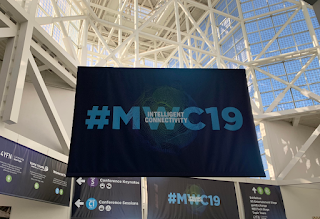Almost half of the mobile connections in North Amerca will be running on new 5G networks by 2025, according to a new GSMA study. This is being fuelled by operator spending on new networks, which is forecast to total more than $380 billion (Capex) between 2018 and 2025.
 “Our new study highlights how the North America region is vying for global 5G leadership with pioneering mobile markets such as China, Japan and South Korea,” said Mats Granryd, Director General of the GSMA. “Investments in next-generation networks and services by operators has helped create an industry that is now worth a trillion dollars a year to the region’s economy, providing a platform for innovation, jobs and economic growth.”
“Our new study highlights how the North America region is vying for global 5G leadership with pioneering mobile markets such as China, Japan and South Korea,” said Mats Granryd, Director General of the GSMA. “Investments in next-generation networks and services by operators has helped create an industry that is now worth a trillion dollars a year to the region’s economy, providing a platform for innovation, jobs and economic growth.”
Some highlights:
There were 321 million unique mobile subscribers in North America in 2018, representing 83 percent of the population. The number of subscribers is forecast to rise to 345 million (85 percent of the population) by 2025.
Around three quarters of the region’s mobile connections2 are running on 4G networks.
The share of 4G connections will decline over the coming years as the market moves to 5G. New 5G networks are forecast to account for 46 percent of connections by 2025.
Mobile technologies and services generated 4.2 percent of North America’s GDP in 2018, equivalent to $937 billion in economic value. This economic impact is forecast to increase to almost $1.2 trillion by 2023 (4.8% of GDP).
The region’s mobile ecosystem also supported 2.3 million jobs (directly and indirectly) and made substantial contributions to the funding of the public sector, with almost $123 billion raised through taxation last year (not including spectrum fees).
North America’s mobile sector is on track to generate $280 billion in revenue this year, a result of high levels of consumer engagement and spending on mobile services.
 “Our new study highlights how the North America region is vying for global 5G leadership with pioneering mobile markets such as China, Japan and South Korea,” said Mats Granryd, Director General of the GSMA. “Investments in next-generation networks and services by operators has helped create an industry that is now worth a trillion dollars a year to the region’s economy, providing a platform for innovation, jobs and economic growth.”
“Our new study highlights how the North America region is vying for global 5G leadership with pioneering mobile markets such as China, Japan and South Korea,” said Mats Granryd, Director General of the GSMA. “Investments in next-generation networks and services by operators has helped create an industry that is now worth a trillion dollars a year to the region’s economy, providing a platform for innovation, jobs and economic growth.”Some highlights:
There were 321 million unique mobile subscribers in North America in 2018, representing 83 percent of the population. The number of subscribers is forecast to rise to 345 million (85 percent of the population) by 2025.
Around three quarters of the region’s mobile connections2 are running on 4G networks.
The share of 4G connections will decline over the coming years as the market moves to 5G. New 5G networks are forecast to account for 46 percent of connections by 2025.
Mobile technologies and services generated 4.2 percent of North America’s GDP in 2018, equivalent to $937 billion in economic value. This economic impact is forecast to increase to almost $1.2 trillion by 2023 (4.8% of GDP).
The region’s mobile ecosystem also supported 2.3 million jobs (directly and indirectly) and made substantial contributions to the funding of the public sector, with almost $123 billion raised through taxation last year (not including spectrum fees).
North America’s mobile sector is on track to generate $280 billion in revenue this year, a result of high levels of consumer engagement and spending on mobile services.
















